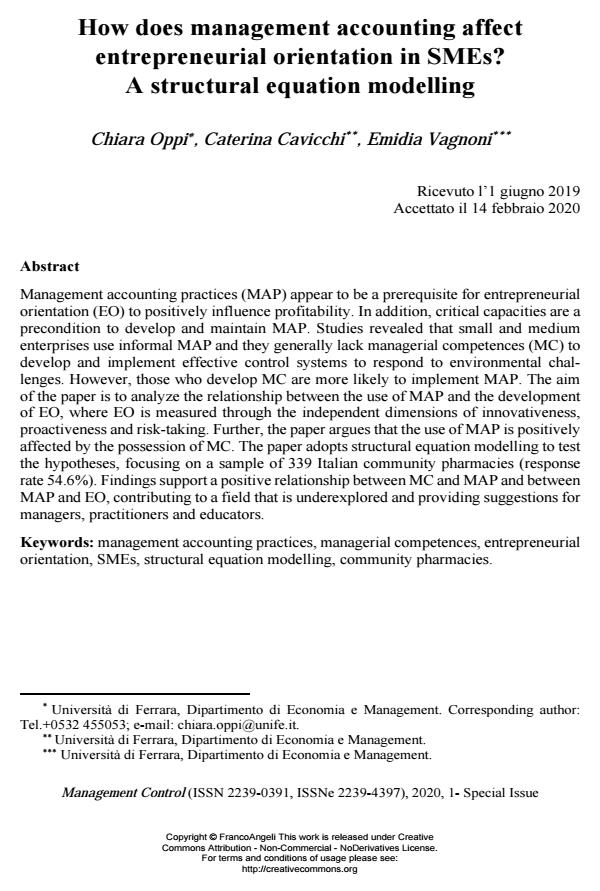How does management accounting affect entrepreneurial orientation in SMEs? A structural equation modelling
Journal title MANAGEMENT CONTROL
Author/s Chiara Oppi , Caterina Cavicchi, Emidia Vagnoni
Publishing Year 2020 Issue 2020/Suppl. 1
Language English Pages 16 P. 63-78 File size 257 KB
DOI 10.3280/MACO2020-001-S1005
DOI is like a bar code for intellectual property: to have more infomation
click here

FrancoAngeli is member of Publishers International Linking Association, Inc (PILA), a not-for-profit association which run the CrossRef service enabling links to and from online scholarly content.
Management accounting practices (MAP) appear to be a prerequisite for entrepreneur-ial orientation (EO) to positively influence profitability. In addition, critical capacities are a precondition to develop and maintain MAP. Studies revealed that small and me-dium enterprises use informal MAP and they generally lack managerial competences (MC) to develop and implement effective control systems to respond to environmental challenges. However, those who develop MC are more likely to implement MAP. The aim of the paper is to analyze the relationship between the use of MAP and the devel-opment of EO, where EO is measured through the independent dimensions of innova-tiveness, proactiveness and risk-taking. Further, the paper argues that the use of MAP is positively affected by the possession of MC. The paper adopts structural equation modelling to test the hypotheses, focusing on a sample of 339 Italian community pharmacies (response rate 54.6%). Findings support a positive relationship between MC and MAP and between MAP and EO, contributing to a field that is underexplored and providing suggestions for managers, practitioners and educators.
Keywords: Management accounting practices, managerial competences, entrepreneur-ial orientation, SMEs, structural equation modelling, community pharmacies.
- Business continuity and planning effectiveness: An empirical analysis of Italian manufacturing SMEs Francesca Sgrò, Federica Palazzi, Massimo Ciambotti, in MANAGEMENT CONTROL 3/2022 pp.89
DOI: 10.3280/MACO2022-003005
Chiara Oppi , Caterina Cavicchi, Emidia Vagnoni, How does management accounting affect entrepreneurial orientation in SMEs? A structural equation modelling in "MANAGEMENT CONTROL" Suppl. 1/2020, pp 63-78, DOI: 10.3280/MACO2020-001-S1005